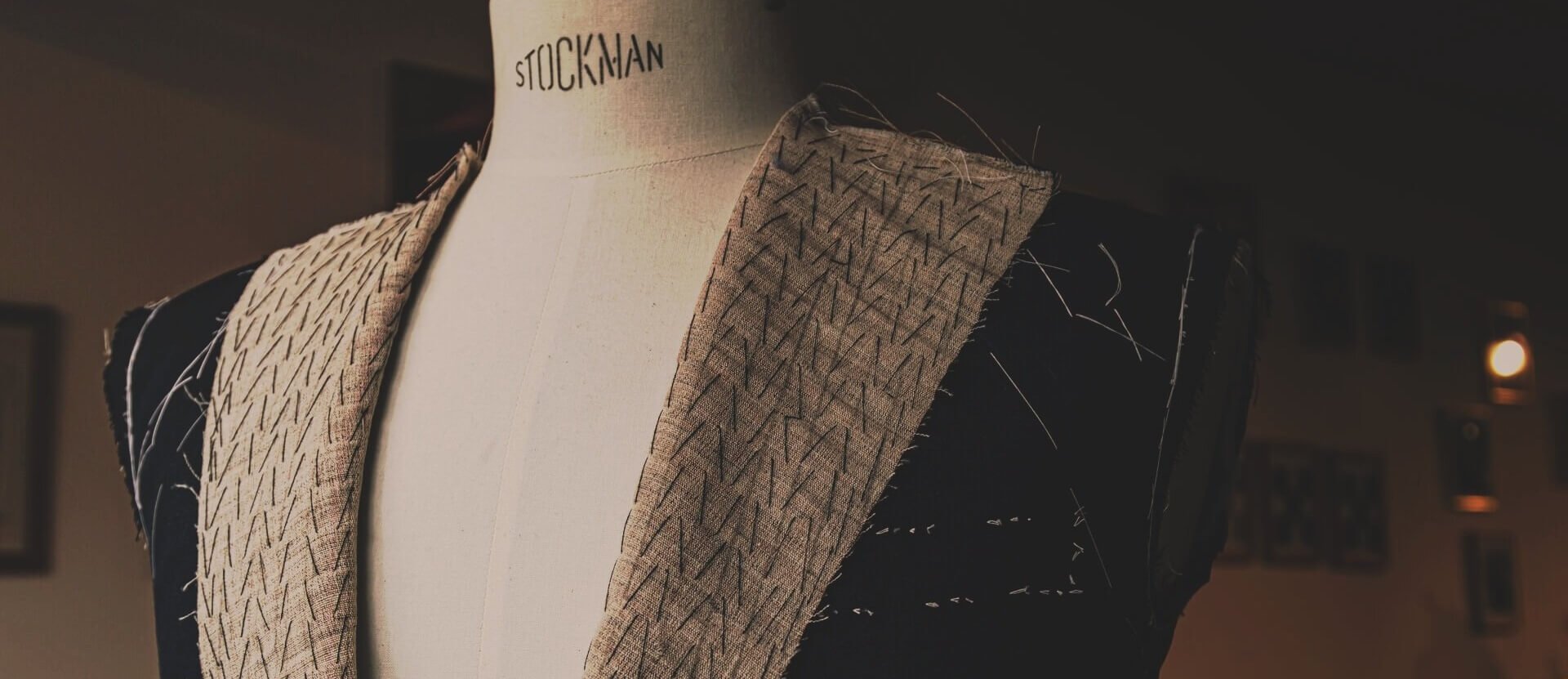
The Baste Fit
Creating a bespoke suit, in this case, a jacket, requires significant practice and involves many steps. The most traditional method of tailoring includes an intermediary fitting known as the baste fit, sometimes referred to as the toile fit.
During this stage, the jacket is loosely stitched together with white cotton thread, allowing for easy adjustments. Features such as buttonholes, pockets, the collar, lapels, and the lining have yet to be completed. You may also opt to take an additional step by leaving the sleeves unattached during the first fitting.
The advantage of the baste fit is that it allows for greater precision in addressing the client’s preferences and needs—a process that requires time and attention.
A baste fit can be likened to the initial construction of a house, which is then further developed and furnished.
Is a baste fit necessary?
The heart of a craftsman and connoisseur says YES, but reality says NO. If you want the full traditional experience, a baste fit is highly recommended as it contributes to a more personalized final suit. However, this often involves details that many may not notice or deem necessary. Additionally, it can significantly increase the cost and require multiple appointments.
How does a baste fit for a bespoke suit work?
Watch the video to see how I try on a new jacket and discuss it with the tailor.





























